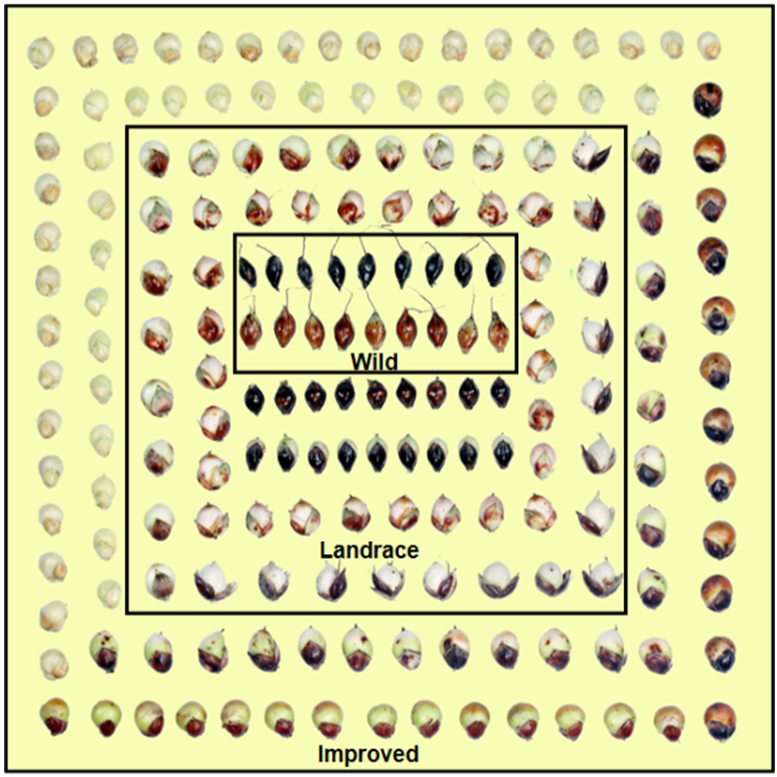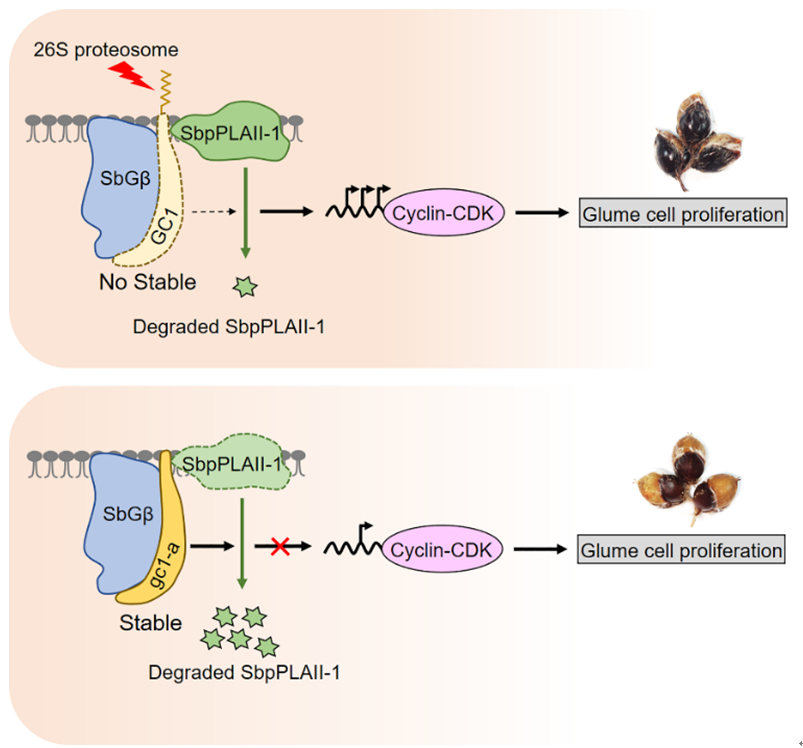In a recent study published online in
Nature Communications, Chinese scientists identified a key gene involved in sorghum glume coverage during cereal domestication. It provides theoretical support basis for naked-grain breeding in sorghum, millet and other gramineous crops, and was conducted by XIE Qi's team from the Institute of Genetics and Developmental Biology, Chinese Academy of Sciences.
Loss of glume coverage leads to detachment of seeds from sticky glumes, a symbolic event in the threshing and domestication of crops. The hulled character carried by wild crop species can resist the invasion of animals and fungi and ensure their own reproduction. However, this hulled trait is greatly weakened during crop domestication due to inconvenient manual or mechanized grain threshing, processing and breeding. Therefore, naked character has been selected by humans.
Sorghum is one of the earliest cultivated gramineous crops. There were abundant phenotypic variation in glume coverage, and most of the grain sorghum varieties are naked. As early as 80 years ago, glume coverage was considered as a typical indicator to distinguish sorghum subspecies, but its molecular basis remains unknown.
Abundant phenotypic variations in sorghum glume coverage. (Image by IGDB)
In this study, through the application of genetics, bioinformatics and molecular biology, the researchers from XIE's lab demonstrated that natural variation of GC1 (glume coverage 1), a major locus, controls glume coverage in sorghum. GC1 functions as a negative regulator in sorghum glume coverage. C-terminal truncated GC1 versions may reduce their degradation mediated by the 26S proteasome, which accumulates significantly higher protein levels, resulting in reduced glume coverage.
According to the researchers, a patatin-related phospholipase SbpPLAII-1 functioning as a positive regulator can promote glume cell proliferation by upregulating the expression of cyclin-CDK-related genes. Compared with GC1, gc1-a, which is more stable in vivo, could promote the degradation of SbpPLAII-1 and then inhibit the function of SbpPLAII-1, resulting in a reduction in sorghum glume coverage.
In addition, selection analysis showed that the GC1 gene was strongly domestically selected in naked sorghum cultivars. The genotype-based geographical distribution results show that the Sahel region, where the annual sorghum yield reaches 65% of total Africa, is a potential domestication center of sorghum.
In conclusion, their study is the first to identify a key gene, GC1, controlling glume coverage and to reveal a molecular mechanism involved in glume development in sorghum. In the future, site-specific truncated mutation in GC1 will also fast achieve the rapid de novo domestication of wild cereal germplasm resources.
A potential working model for GC1 controls sorghum glume coverage. (Image by IGDB)








